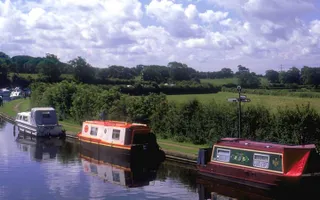There are other types of planning tools that can be used to grant planning permission for specific development.
Local Development Orders
Local planning authorities (LPAs) are increasingly using LDOs to simplify the planning regime in their area.
LDOs are made by LPAs and give a grant of planning permission to specific types of development within a defined area. They remove the need for developers to make a planning application to the LPA for the types of development identified in the Order.
The procedures for making an LDO are set out in Sections 61A to 61D and Schedule 4A of the Town and Country Planning Act 1990, as amended, and Articles 38 and 41 of the Town and Country Planning (Development Management Procedure) (England) Order 2015.
We're a statutory consultee in respect of planning applications. If an LPA is required to consult us on an application for planning permission for the development proposed in an LDO, then they are required to seek our views on a draft LDO.
Our development management checklist may prove to be a useful reference when LPAs are initially considering making an LDO. We recommend that LPA's enter into early discussions with us. It's our view that, in general, it will be necessary to include conditions or exclude areas from an LDO to protect our waterways. LPA's should also consider that changes of use permitted by an LDO can alter the permitted development rights afforded to a property which, in turn, could affect the waterways.
We also have statutory duties to protect and safeguard the natural environment, landscape character and built heritage of waterways as well as duties relating to public access and recreation use of the inland waterways. We ask LPAs to consider how the development permitted by the LDO will impact on the overall character of the waterway corridor and how any unacceptable impacts should be addressed.
Neighbourhood Development Orders
NDOs are proposed by ‘qualifying bodies' and are made by the LPA. NDOs can grant planning permission for specified developments within a neighbourhood area. NDOs remove the need for developers to make a planning application to the LPA for the types of development identified in the Order.
The procedures for making an NDO are set out in Section 61E and Schedule 4B of the Town and Country Planning Act 1990, as amended, the Neighbourhood Planning (General) Regulations 2012 and Article 42 of the Town and Country Planning (Development Management Procedure) (England) Order 2015.
We're a statutory consultee in respect of planning applications. Before submitting an NDO proposal to the LPA, a qualifying body must consult us if the development to be authorised by the Order would ordinarily have required consultation with us as a statutory consultee. Our development management checklist may prove to be a useful reference when qualifying bodies and LPA's are initially considering making an NDO.
The LPA is required to notify us that an order proposal has been received from a qualifying body if we are referred to in the consultation statement submitted.
A Community Right to Build Order (CRtBO) is a type of development order which grants planning permission for development specified in the Order. The CRtBO is similar to the NDO but provides additional powers concerning ongoing ownership, such as retaining affordable housing forever. Unlike NDOs a CRtBO can be prepared by community organisations that meet certain legal requirements, and not just a qualifying body, such as a town or parish council.
The procedures for Community Right to Build are set out in Schedule 11 of the Localism Act 2011 and the Neighbourhood Planning (General) Regulations 2012.
We're a statutory consultee in respect of planning applications. Before submitting a CRtBO proposal to the LPA, good quality publicity and consultation should be carried out by the proposing body. This should include consulting us if the development to be authorised by the order would ordinarily have required consultation with us as a statutory consultee. Our development management checklist may prove to be a useful reference when qualifying bodies, community organisations and LPAs are initially considering making a CRtBO.




